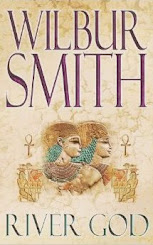This children's book features a chapter in the life of George Washington's slave, Hercules, who manages to bake Washington's birthday cake despite not having any sugar on hand. Critics are upset at the rosy portrayal of slavery and the slave-master relationship in this book, and Scholastic, the publisher, pulled it from shelves. It didn't matter that the author is not white or racist, or that they were apparently not doing what they were accused of. Slavery was horrible and must in no way be presented in a kindly light.
"While it is perfectly valid for critics to dispute a book's historical accuracy and literary merit, the appropriate response is not to withdraw the volume and deprive readers of a chance to evaluate the book and the controversy for themselves," according to a statement from the National Coalition Against Censorship and the PEN American Center.
Scholastic has responded to the criticisms, saying that they pulled the title because no, we were not browbeaten into it. It was because the title "did not meet our publishing standards."
On a somewhat related note, Kate Breslin's For Such a Time was also panned for using the Holocaust as a backdrop for a tale of romance (with Christian undertones) between a German SS officer and a Jewish woman.
I'm inclined to believe that this is just a couple of cases where two publications were shouted at without addressing the sources of the outrage. In the US, blacks in general are still treated as second-class citizens; and modern-day slavery in many parts of the world contributes much to our 21st-century lifestyle: in fashion, construction and gadgets, for instance. Bigotry is still rife in many societies, and not just towards Jews.
Reading these reports, we're not sure whether these critics have anything to say about forced labour, racism and anti-Semitism today. Maybe all that ended up on the cutting-room floor because of the media's supposed tendency to curate the news to suit certain agendas. So all we seem to get from these people are along the lines of "Nothing good happened during those times! Stop looking, and stop imagining!"
But who's to say that the above scenarios are implausible? Can a slave not be resourceful and proud of his work, even under oppression and inhumane treatment? Is it impossible for two people to have a romance, despite being on two sides of an unbridgeable ideological chasm?
For me, these small specks of brightness cast a light not on the already well-documented horrors of slavery or the Holocaust, but upon the humanity buried underneath the muck. Even in adversity, there is still a small part of us that strives to be the best we can be.
If we can't tell stories like this anymore, then what? The shouty types don't seem to have any other solution than "Don't write them". They appeal to their audiences with horrific images of "what really happened", burying any attempt by others to mess around with the official narrative, even in fiction.
I like the idea of a slave who, despite his circumstances, takes enough pride in himself and his job to find ways to solve a problem. He can think, strategise, improvise. He has potential - why not celebrate that?
And it's a children's book. The way the critics were howling you'd think they'd want the young 'uns aged two and up to be aware of just how nasty the practice of slavery is. Is that wise?
Besides: "It's possible, though not encouraged by our screaming online culture, to raise serious objections to this book without calling into question the motives or talents of the people involved," Ron Charles wrote in that WaPo article.
(This is why Charles is one of my favourite book people.)
Let little kids be themselves. Treat them with small slices of real life they can stomach and digest. They will grow up eventually, and when they finally have questions about what really went on as Hercules baked that birthday cake, that's when you know they're ready for the answers.
Books - and the Internet - aren't supposed to teach our children everything. That's our job. And maybe we shouldn't scream those lessons into them either.
Categories:
Book Blab

















